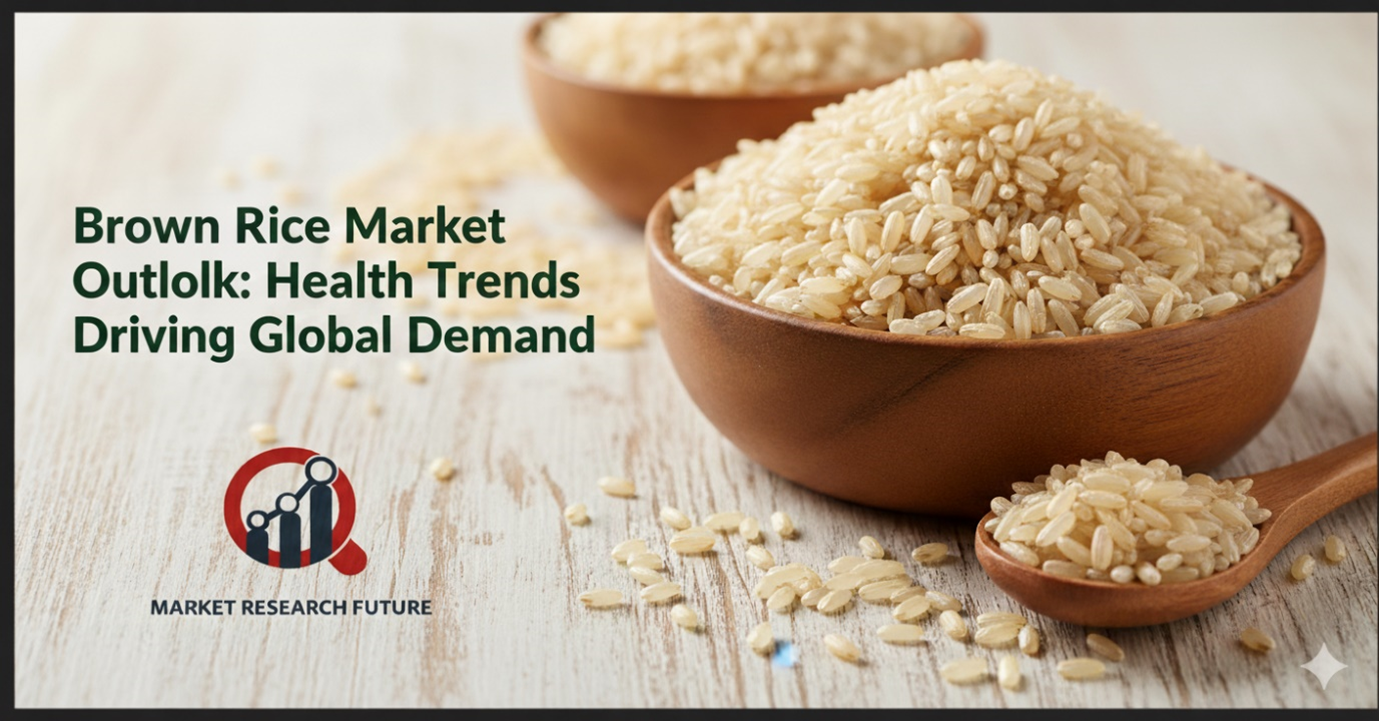Brown Rice: Market Forecast Released

Health has become the new wealth, and food choices are at the heart of this global shift. Among the many staples being revisited, brown rice has captured attention as a healthier, more sustainable alternative to white rice. Once considered a niche grain, it is now entering mainstream diets across the world. From fitness enthusiasts to everyday households, brown rice is steadily reshaping consumer habits and market opportunities.
Why Consumers Are Choosing Brown Rice
More people today are questioning what goes into their meals and how it affects long-term health. This has created a strong push toward whole grains, with brown rice leading the way. Unlike polished white rice, brown rice retains its nutrient-dense layers, making it richer in fiber, vitamins, and minerals. For those managing weight, improving heart health, or keeping blood sugar in check, brown rice is becoming the go-to option. In fact, it is no longer seen just as “healthy food,” but as a natural part of balanced and modern eating.
Nutrition at the Core of Growth
The real power of brown rice lies in its nutritional makeup. Its fiber content aids digestion, its magnesium helps support metabolism, and its antioxidants protect the body from free radicals. These benefits make it a smart fit for a wide variety of diets, whether it’s gluten-free, plant-based, or clean-label. This versatility explains why brown rice is appearing in diet plans, fitness menus, and even restaurant offerings across regions. It is being embraced not just as a substitute for white rice but as a superior grain in its own right.
The Sustainability Angle
Beyond personal health, consumers are also making food choices with the planet in mind. Here, brown rice scores another win. The demand for organic and sustainably produced varieties is on the rise, reflecting a willingness to invest in foods that are both good for the body and less harmful to the environment. Brands and farmers adopting eco-friendly cultivation methods and recyclable packaging are finding favor with consumers, especially in premium and urban markets. This eco-conscious mindset is giving the organic brown rice segment a strong growth push.
Regional Shifts in Demand
The adoption of brown rice shows interesting patterns across regions. In Asia-Pacific, where rice is a cultural staple, urban populations are gradually switching to brown rice for its health advantages. Japan, India, and China are seeing noticeable demand growth, particularly among middle-class and younger consumers. In North America and Europe, brown rice already enjoys a reputation as a healthy staple and continues to benefit from rising awareness around whole grains. Meanwhile, regions like the Middle East and Africa are only beginning to explore the product, but with health trends spreading fast, the market potential is strong.
Innovation Making Brown Rice More Convenient
One barrier to brown rice consumption has been the perception of it being less convenient or slower to cook. Food companies are addressing this through innovations in milling and packaging. Ready-to-eat brown rice packs, quick-cooking options, and portion-friendly pouches are now widely available. Alongside, eco-conscious packaging and premium branding are helping to position brown rice as both a healthy and lifestyle-friendly choice. This convenience factor is a game changer in expanding its appeal among busy consumers.
Market Challenges
Despite its many strengths, brown rice still faces hurdles. Its higher price compared to white rice can make it less accessible in cost-sensitive regions. Shelf life is another concern, as the natural oils in brown rice can shorten storage time. These challenges underline the need for better preservation technologies and awareness campaigns to show why the long-term health benefits justify the higher cost.
Looking Ahead
The future of brown rice looks promising as global consumers continue prioritizing health and sustainability. With more governments promoting whole grain consumption and companies innovating around convenience, the market is set for steady expansion. What was once considered a specialty grain is now moving closer to being a mainstream choice.
Conclusion
Brown rice is carving out a strong identity as a grain that meets the needs of today’s health-focused, environmentally aware consumers. Its rich nutrition, sustainable appeal, and growing accessibility are pushing it beyond niche markets into everyday diets. As more people make conscious food choices, brown rice is poised to remain a key driver in the global shift toward healthier living.

Leave a Comment